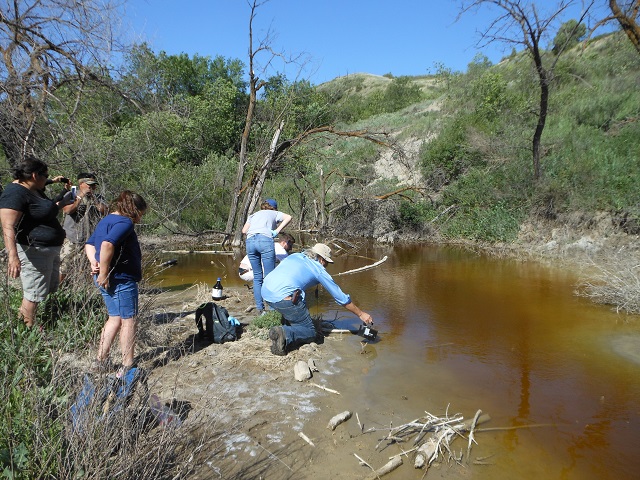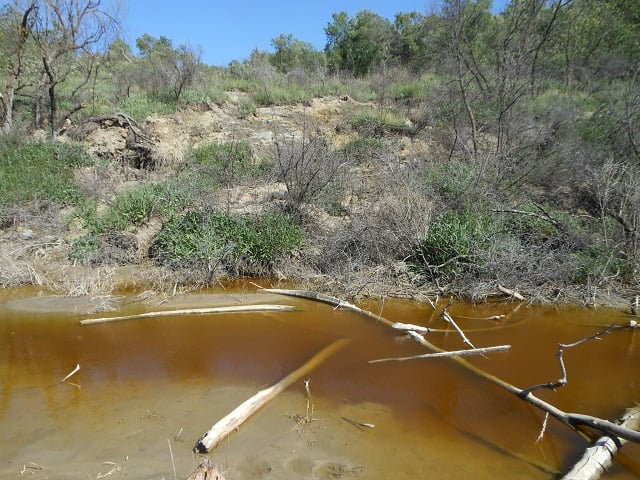
Legislative hearings have begun about the water crisis in Hoosick Falls, New York, and many people have been dropping the F word: Flint. We should find out if the state mismanaged the situation in Hoosick Falls, but in a very fundamental way, it is different than Flint, Michigan, where the water contamination itself was created by the state. At least New York Gov. Andrew Cuomo and his agencies don’t have to worry about that accusation.
However, if they don’t do their homework, they could easily create a true Flint-like crisis at Seneca Lake, the biggest of the Finger Lakes and the drinking water source for 100,000 people. A Texas-based company, Crestwood, wants to make Seneca Lake the fracked-gas storage hub for the entire Northeast. The storage facility will be similar to the one near Los Angeles that leaked uncontrollably last winter for months, causing illness, long-term relocation of entire communities and plummeting real estate values. It dealt a severe blow to California Gov. Jerry Brown’s image as a climate leader.
In February 2015, New York’s Department of Environmental Conservation (DEC) held an issues conference regarding Crestwood’s Seneca Lake plans. Crestwood’s representatives assured everyone that their planned facility would pose no danger to Seneca Lake and its drinking water supply. Rather than take Crestwood’s word for it, the governor and DEC would be wise to check out Crestwood’s track record halfway across the country in North Dakota.
That state has become famous for the environmental problems associated with its recent oil boom. In the past 10 years, there have been more than 10,000 reported environmental “incidents” such as spills involving hundreds of companies. Crestwood, through its subsidiary Arrow, is the only company responsible for three of the state’s 20 largest spills.
The biggest of those spills, and the one most relevant to the situation at Seneca Lake, occurred in July 2014. Over a million gallons of toxic wastewater leaked from a broken pipe. It immediately flowed into a steep ravine, where it entered a tributary that carried it a short distance to Lake Sakakawea. Like Seneca Lake, Lake Sakakawea serves as a drinking water source. It supplies much of the Fort Berthold Indian Reservation. The water intake for the reservation town of Mandaree is located exactly where the spill entered the lake. It was the biggest spill the state had ever encountered. The Environmental Protection Agency issued a notice of potential violation, and the US Attorney’s Office served Crestwood with a subpoena.
Within a year, Crestwood had two more top 20 spills. Even Lynn Helms, the state director of mineral resources and a staunch supporter of the oil industry, publicly stated that Crestwood’s pipeline system had “substantial problems.”
After creating those spills, Crestwood then failed to clean them up. A full year after the million-gallon spill occurred, a research team from Duke University visited the spill site and collected water and soil samples near the tributary. Test results came back positive for heavy metals, high salinity and radioactive material. This was not surprising, since Crestwood’s method of “cleanup” consisted of massive flushing of the soil near the source of the leak, which simply moved the contaminants down into the ravine, then the tributary and, ultimately, the lake. Dr. Avner Vengosh, the leader of Duke’s research group, said this was the worst thing Crestwood could have done, which seems obvious.
This past June, two years after the spill, Duke researchers again collected samples at the same location.
 June 2016: Duke researchers collecting samples from the site of Crestwood’s July 2014 million-gallon spill. (Photo: Bill Kitchen)
June 2016: Duke researchers collecting samples from the site of Crestwood’s July 2014 million-gallon spill. (Photo: Bill Kitchen)
Nothing had changed. They found the same pools of lifeless water and will likely receive similar test results.
 June 2016: A lifeless brine pool still at the site of Crestwood’s big July 2014 spill. (Photo: Bill Kitchen)
June 2016: A lifeless brine pool still at the site of Crestwood’s big July 2014 spill. (Photo: Bill Kitchen)
Two years after the spill, tribal chair Mark Fox stated that negotiations are still ongoing with Crestwood and EPA concerning how Crestwood will compensate the reservation for damages due to the spill.
Almost every town that surrounds Seneca Lake has passed a resolution in opposition to Crestwood’s planned facility. Organizations like We Are Seneca Lake and Gas Free Seneca have sprung up, comprised of citizens and business owners. One of the longest-running, most successful nonviolent civil disobedience campaigns in the country continues to grow as protesters, aged 19 to 90, periodically blockade Crestwood’s gates. The campaign will soon be two years old and there have been 657 arrests. These people aren’t going to give up.
Crestwood’s project is not only about Seneca Lake and its drinking water. It is increasingly being seen as an indicator, like the Keystone XL pipeline was for President Obama, of how seriously Governor Cuomo plans to address climate change.
The governor has all the headaches he needs regarding water problems in Hoosick Falls, even if the state did nothing wrong. He shouldn’t create a truly Flint-like crisis at Seneca Lake that will be entirely of his own making by allowing Crestwood to build a giant gas station at water’s edge. If he does, there will be contamination. It’s just a matter of when and how often. North Dakota has warned us. Repeatedly.
Join us in defending the truth before it’s too late
The future of independent journalism is uncertain, and the consequences of losing it are too grave to ignore. To ensure Truthout remains safe, strong, and free, we need to raise $43,000 in the next 6 days. Every dollar raised goes directly toward the costs of producing news you can trust.
Please give what you can — because by supporting us with a tax-deductible donation, you’re not just preserving a source of news, you’re helping to safeguard what’s left of our democracy.